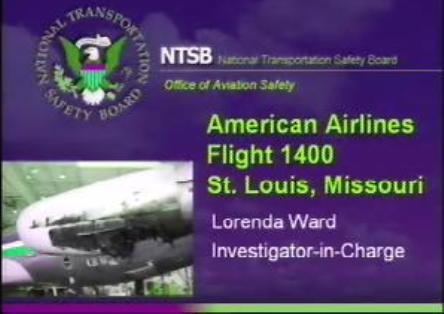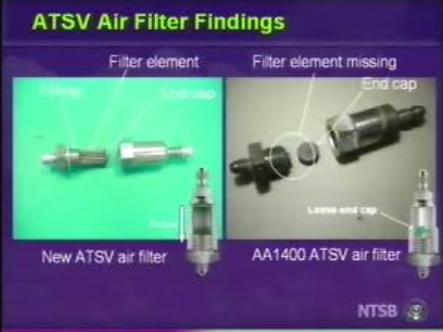The US National Transportation Safety Board (NTSB) says American Airlines use of "inappropriate" maintenance procedures to manually start Boeing MD-82 engines and the flight crew's handling of engine fire emergency procedures were the probable causes behind a non-fatal 28 September 2007 accident in St. Louis.
Contributing to the accident were deficiencies in the FAA's continuing analysis and surveillance system (CASS), a programme that gives carriers the responsibility for evaluating, analysing and correcting systemic maintenance and inspections problems.
In whole, the failings led to an engine fire and subsequent complicated emergency landing of the MD-82 shortly after takeoff from the St. Louis Lambert International Airport.
The picture below, from the NTSB final hearing on the accident, shows fire damage to the engine nacelle. Investigators say the engine core exhibited no abnormalities.

Pilots of Flight 1400, with 138 passengers and five crew members onboard, received a left engine starter warning shortly after take off followed by a left engine fire warning.
Delays in completing the emergency checklist for the engine fire however resulted in significant damage to the engine and systems as the fire raged, and pilots diverted their attention to air traffic control and cabin communications.
Investigators say the fire burned for approximately 3 minutes before pilots discussed turning off the fuel to the engine and continued burning as they considered firing the extinguishing agent into the nacelle, items included in the emergency checklist.
The aircraft returned to the airport only to perform a single-engine go-around after the nose landing gear would not deploy due to hydraulic fluid losses caused by the prolonged fire.
The twin-jet later landed safely after pilots deployed the gear using emergency procedures, though more issues occurred after landing due to other mechanical and electrical problems, again caused by the longevity of the fire. There were no injuries to anyone on board.
Subsequent failures faced by the pilots included intermittent flight displays, inability to lower full flaps for landing, lack of nose wheel steering on landing, failure of the cabin door locking mechanism and inability to shut off the fuel supply to the failed engine.
Precipitating the in-flight emergency was faulty work by American's maintenance staff, both in planned depot visits and on the line.
Investigators found that the left engine's air turbine starter valve (ATSV) air filter had disintegrated due to improper cleaning maintenance, most likely during the aircraft's most recent "C" maintenance check 10 months before the accident. That fault caused numerous failed starting attempts for that particular engine, and led to manual starts by mechanics on the ground.
The picture below, also from the NTSB, shows a typical air filter on the left and the accident aircraft's missing air filter. The freed end cap caused disruption to the air flow, often preventing engine starts.

The ATSV provides forced pneumatic air to start an engine, though because of issues with the air filter, a part not designed to be replaced during the life of the aircraft, the ATSV could not reliably provide air to start the engine.
Mechanics had been called in to use a manual procedure to start the engine numerous times in the previous 10 days and had replaced the ATSV six times without properly diagnosing the issue with the separate filtering unit.
In addition, the line mechanics had been using a non-approved but time-saving procedure to manually start the engines in such circumstances, which involved using a lever to push a manual start button under the engine.
However the action had damaged the manual starting switch, a possibility Boeing warned operators about in 1997.
The damage ultimately caused the starter to engage during takeoff and climb, causing the device to self-destruct and create an ignition source within the nacelle. The NTSB was not able to determine the source of fuel for the fire due to the extensive damage.
American in the aftermath of the accident modified its maintenance programme and pilot procedures to correct several of the issues discovered in the investigation.
NTSB's nine recommendations to the FAA include evaluating the history of the ATSV uncommanded openings in the MD-80 fleet as well as evaluating whether the master caution light should illuminate when such an error occurs, as well requiring Boeing to establish replacement intervals for ATSV air filters.
For American Airlines, the Board recommended finding out why CASS did not reveal the maintenance issues or the lack of compliance with carrier procedures before the accident occurred.
The NTSB did not make recommendations on sterile cockpit rules, despite recordings showing that the pilots in this accident had engaged in non-essential conversations during taxi operations. NTSB officials say recent recommendations issued at the conclusion of the Pinnacle Airlines and Comair Lexington, Kentucky accident reports already include sterile cockpit issues.
Source: Air Transport Intelligence news























